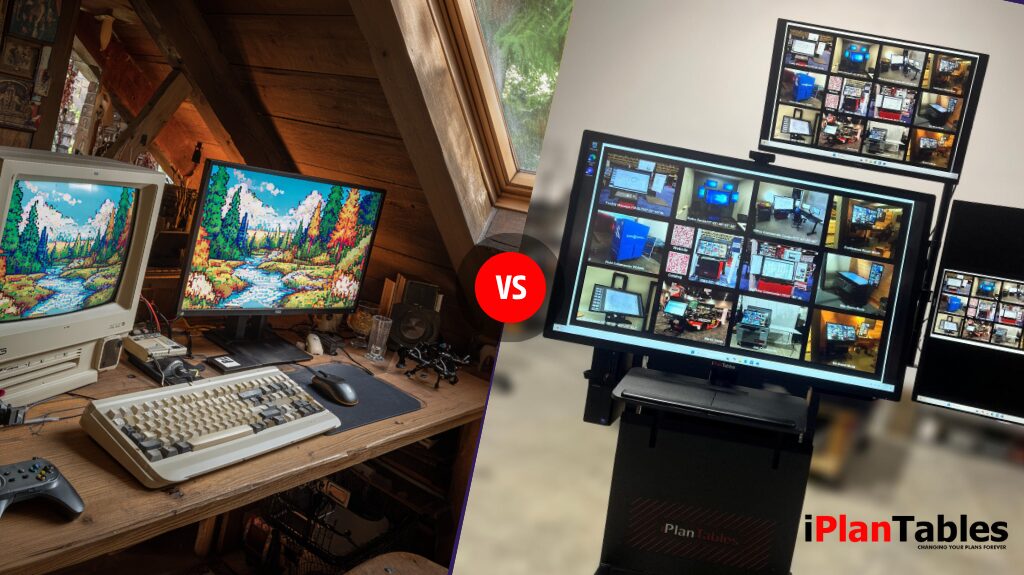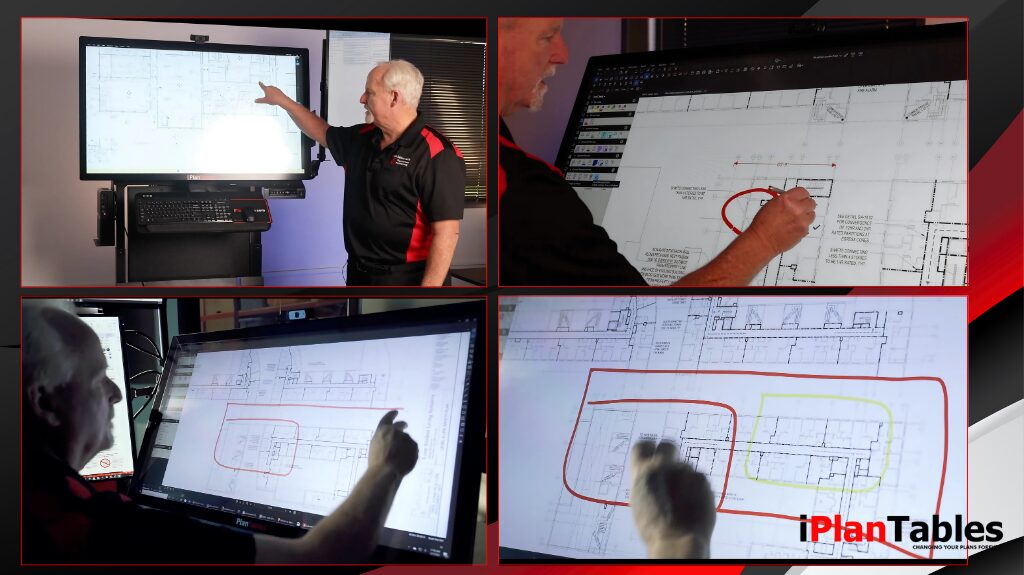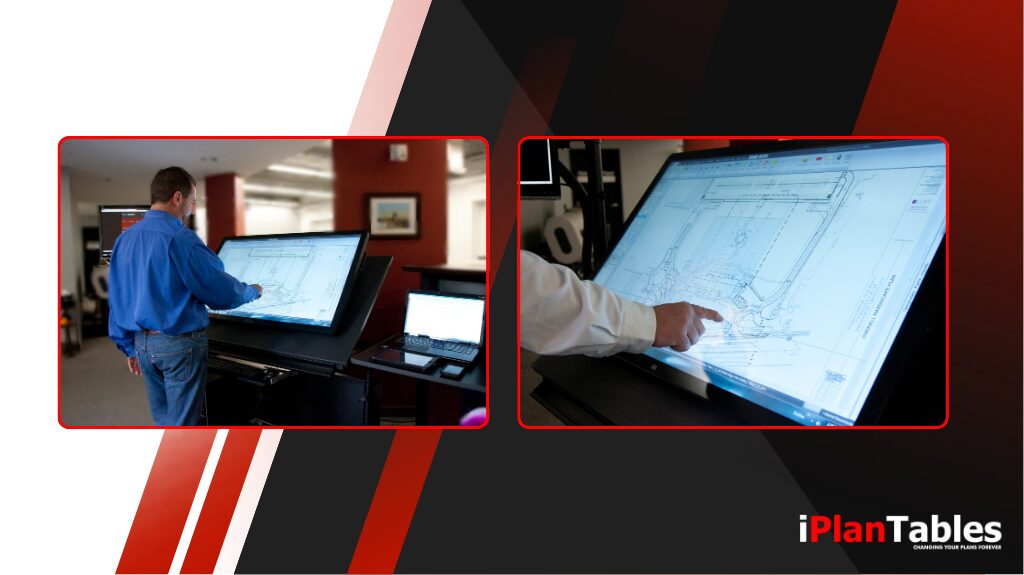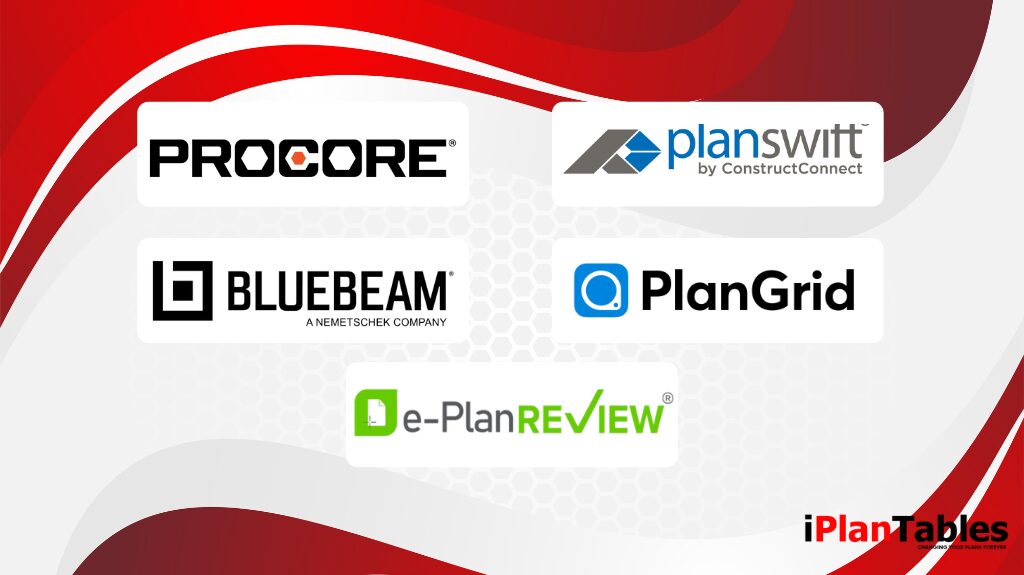
In the construction and plan review industries, precision and speed are non-negotiable. Project managers, engineers, and architects often juggle digital plans, markups, and revisions—sometimes all at once. That’s why the integration of palm rejection touch screen technology has become a pivotal innovation. The advanced workstations from iPlanTables don’t just offer convenience—they fundamentally change how professionals engage with digital blueprints.
Unlike standard consumer tablets or monitors, industrial-grade touchscreens with intelligent hand-rest filtering offer seamless pen-input functionality while accurately distinguishing between deliberate stylus use and incidental contact from the user’s hand. This creates a natural drawing and reviewing environment, especially crucial for large-scale documents and intricate revisions.
Why Palm Rejection Touch Screen Technology Matters in the Field

The construction sector continues to evolve rapidly. According to McKinsey’s Global Construction Survey, digital transformation efforts have grown by 70% in the last three years. However, productivity often lags due to outdated hardware setups that disrupt flow and accuracy.
With advanced input recognition technology, users gain the freedom to write, sketch, and annotate as naturally as they would on paper. No more accidental strokes. No more cursor jumps. This is especially vital when working with CAD drawings, redlining specs, or marking up large-format documents.
For executives investing in digital workstations, the ROI extends beyond the hardware itself. Our workstations cut down on miscommunication, reduce paper clutter, and elevate overall operational efficiency.
The Anatomy of a Productive Workflow: The Role of Palm Rejection Touch Screen
True digital transformation in plan review begins with eliminating friction in human-device interaction. This is where the palm rejection touch screen feature proves its worth.
Unlike older resistive or capacitive systems, today’s advanced interactive workstations feature active stylus integration that distinguishes deliberate pen input from unintentional hand contact. This intelligent separation removes the need to hover awkwardly or constantly adjust wrist placement, reducing hand fatigue and increasing markup accuracy.
This innovation becomes even more valuable when teams are working in environments where large construction documents are reviewed and revised in real time. In a high-stakes field where a missed annotation could result in costly rework, intuitive digital interface interaction is a non-negotiable.
Speed Meets Precision: How Precision Input Displays Enhance Review Accuracy

According to Dodge Construction Network, 88% of contractors say real-time access to markups improves communication with field teams. Yet traditional tools still create unnecessary drag—laggy inputs, accidental marks, and awkward display dimensions.
The advanced pen-input interface addresses these limitations. When paired with 4K ultra-HD displays and intuitive styluses, professionals can zoom into detailed sections, annotate with pinpoint accuracy, and collaborate without second-guessing their inputs.
In practice, this means fewer errors during plan approval stages and faster turnaround on documentation. Reviewers can focus entirely on the task—without struggling against the interface.
Moreover, this improved experience enables better collaboration across teams. Instead of emailing PDFs back and forth, stakeholders can gather around the digital plan table, mark up changes in real time, and export updates instantly.
Ergonomics: Supporting Long Sessions Without Fatigue
For plan reviewers and estimators, reviewing documents isn’t a one-hour job—it often spans entire workdays. iPlanTables addresses this reality with large-format adjustable workstations equipped with ergonomic tilt and height controls. Our workstations are designed to support long review sessions without physical strain.
Touchscreen technology that mimics natural hand movement reduces cognitive load. Users don’t have to constantly correct errors caused by the interface. Instead, they concentrate on identifying plan inconsistencies, tracking RFIs, or redlining specs.
Ergonomics and functionality work hand-in-hand. Adjustable monitors allow users of varying heights and preferences to create a tailored workspace that supports accuracy and focus.
Integrating With Existing Software Environments

Adopting new hardware often sparks concerns about compatibility. Will it work with our PDF viewer? Can we still use Procore, Bluebeam, PlanGrid, ePlanReview, PlanSwift or other Windows-based software programs?
The answer is yes. iPlanTables workstations are software-agnostic. They support all major plan review and markup tools used in the construction industry. With Windows OS at the core, every workstation offers plug-and-play functionality. The experience becomes more intuitive—even for teams unfamiliar with advanced digital systems.
This plug-and-play adaptability also reduces IT friction during onboarding. Your team won’t need extensive training or a new software suite. The hardware simply elevates how they interact with the systems they already use.
The Data Behind the Advantage: Efficiency, Accuracy, and ROI
Let’s look at the numbers. A survey by FMI Consulting found that rework due to poor documentation or communication accounts for nearly 9% of total project costs. For a $10 million job, that’s nearly $900,000 lost to preventable errors.
Investing in a modern workstation helps eliminate these avoidable costs by empowering plan reviewers to work accurately the first time. Markups are faster, annotations are clearer, and reviews happen without interruption from interface glitches.
Even if your organization processes just 15–20 large plan sets a month, the time saved from streamlined review sessions pays off in weeks. Factor in reduced printing costs, less downtime, and improved team alignment, and the system pays for itself rapidly.
Scalability for Teams and Municipalities
Whether you’re overseeing a private design firm, a municipal planning board, or a state-level permitting department, your workflows likely differ. That’s why scalability matters.
iPlanTables offers scalable digital solutions ranging from compact desktop units to full-size conference-ready tables. Each one is engineered with flexibility in mind—so it supports single users, hybrid teams, or full staff meetings with equal ease.
This flexibility makes it easier for public agencies to modernize without overhauling their entire workflow model. The hardware slots in seamlessly, allowing decision-makers to test and scale digital review solutions without disrupting current approvals or permitting processes.
Future-Proofing Your Review Workflow
Technology in construction isn’t slowing down. From augmented reality overlays to real-time change detection and AI-based risk assessment, plan review will only grow more complex.
Adopting modern tools ensures your team stays ahead. You won’t have to retrofit or adapt obsolete tools to meet future demands. Instead, you’ll have a hardware foundation designed to grow with evolving software and project demands.
For firms aiming to remain competitive and efficient, this is no longer a luxury—it’s a strategic imperative.
Final Thoughts
Digital transformation doesn’t stop with software upgrades. It includes the work environment itself. A thoughtfully designed ergonomic workstation creates space for clearer thinking, faster iteration, and more informed decisions. In construction, public planning, education, and corporate strategy, the ability to work smarter—not harder—starts with the tools we use every day.
Choose Tools That Work the Way You Do
Choosing a pen-enabled workstation is more than a hardware upgrade. It’s a decision to optimize accuracy, speed, collaboration, and cost-efficiency. Whether you’re leading a private construction firm or a public agency, the benefits of stylus-enhanced, hands-on workflows are clear.
Make the leap toward smarter plan review.

